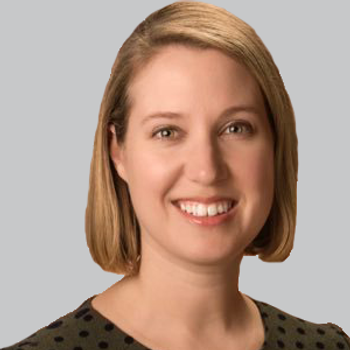
In additional data from CENTAUR, Amylyx touted the drug's ability to prolong tracheostomy-free and ventilation-free survival.

Marco Meglio, Assistant Managing Editor for NeurologyLive, has been with the team since October 2019. Follow him on Twitter @marcomeglio1 or email him at [email protected]

In additional data from CENTAUR, Amylyx touted the drug's ability to prolong tracheostomy-free and ventilation-free survival.

After previously failing a phase 3 trial of patients with multiple system atrophy, verdiperstat continued to show an effect in patients with ALS that was similar to those on placebo.

Ashgan Elshinawy, DO, a pulmonologist at Penn Medicine, assessed the current ways to treat patients with insomnia and the areas of needed improvement.

Consistent with the overall population, newly diagnosed, treatment-naïve patients with MS showed better relapse rates, all-cause disability worsening—including progression independent of relapse activity—with ofatumumab over teriflunomide.

The professor of neurology and pediatrics at the University of Rochester Medical Center provided insight on the emerging therapies and advancements for treating patients with Duchenne muscular dystrophy.

Avindra Nath, MD, clinical director of the National Institute of Neurological Disorders and Stroke, provided insight on new findings that may explain the symptoms of certain cases of sporadic ALS.

Over a 3.5-year treatment period, the risk of serious infections or malignancies, few of which were previously reported, did not increase with additional ofatumumab exposure.

Over a long-term follow-up, a high proportion of patients were compliant to therapy, with adverse events mild-to-moderate in nature, regardless of individuals being on continuous treatment or switched from placebo.

Brian Callaghan, MD, MS, associate professor at the University of Michigan, discussed his presentation at AANEM 2022 on changing the treatment paradigm for painful diabetic neuropathies.

Among a surveyed cohort of patients with myasthenia gravis, 75% reported that their work was impacted, and 27% of respondents claimed they lost wages as a result of MG.

Minimal symptom expression, demonstrated by scores of 0 to 1 on MG-ADL, was observed in more than 25% of both rozanolixizumab groups compared with 3.0% of those on placebo.

More than 85% of the individuals who continued givosiran (Givlaari; Alnylam) through the 36-week open-label extension were attack free in the final 3 months of treatment.

From the pre-COVID period to 6 weeks after vaccination, the reporting rate of GBS was significantly different, regardless of whether Brighton criteria was applied to the analysis. The authors noted that passive surveillance limitations warrant further analysis.

After 12 weeks of treatment with zilucoplan 0.3 mg/kg, almost three-fourths of patients demonstrated at least a 3-point reduction in Myasthenia Gravis Activities of Daily Living scores.

The director of NYU Langone’s Alzheimer’s Disease Research Center and Center for Cognitive Neurology provided perspective on raising awareness for World Alzheimer’s Day and the ongoing challenges patients with the disease face.

After demonstrating a positive reduction of mutant huntingtin protein in preclinical studies, WVE-003 continued to show similar results when assessed in 30- and 60-mg doses.

One of the identified loci related to clinical progression in Parkinson disease expresses ADORA2A in the cerebellum, which encodes the adenosine A2A receptor, a promising target for therapeutics in PD.

The Parkinson disease agent showed a safe and tolerable profile, with significantly greater improvements in MDS-UPDRS-III scores and OFF time per day.

The explosion of new science and legislative decisions have expanded the capabilities and reach of newborn screening, providing thousands of families every year an opportunity to seek early, and critical, care for their infants.

Over a 2-year period, patients demonstrated improvements in Parkinson’s Disease Questionnaire scores, along with a 35% improvement in MDS-UPDRS-III scores.

Treatment with NurOwn resulted in response on several secondary outcomes, including timed 25-foot walk, 12-item multiple sclerosis walking scale, and low contrast letter acuity, among others.

Approximately half of the respondents with a history of headache screened positive for migrainous headache by ID-migraine criterion with most reporting moderate to severe intensity headache.

In addition to headache, other COVID-19 symptoms such as anosmia, myalgia, and nausea or vomiting were associated with higher survival rates.

Patients who demonstrated increased central pulse pressure and forward wave amplitude had greater entorhinal tau burden. These measures were not associated with amygdala, inferior temporal, nor precuneus tau burden.

Long-term use of the Constant Therapy program was feasible in a patient population with Alzheimer disease, as shown by the rate of adherence (80%) and use of the program over 24 weeks.

The molecular biologist at the Cleveland Clinic Lerner Research Institute discussed the unanswered questions regarding biomarkers sTREM2 and GFAP, and the role they play in Alzheimer pathology.

In a previous phase 2 study, patients treated with fosgonimeton alone demonstrated potentially beneficial change in ERP P300 latency, as well as cognitive improvement, compared with placebo at 26 weeks.

Infudopa SubC, or subcutaneous DIZ102, demonstrated 100% bioavailability compared with 80% for intestinal administration of levodopa/carbidopa gel infusion.

A doubling of mean seizure intervals was demonstrated from period 1 to period 4 for the 76-patient cohort who received the Neurelis nasal spray treatment across 360 days.

Jay Alberts, PhD, the Edward F. and Barbara A. Bell Endowed Chair at Cleveland Clinic, provided commentary on an innovative approach using virtual reality to detect early signs of Parkinson disease.